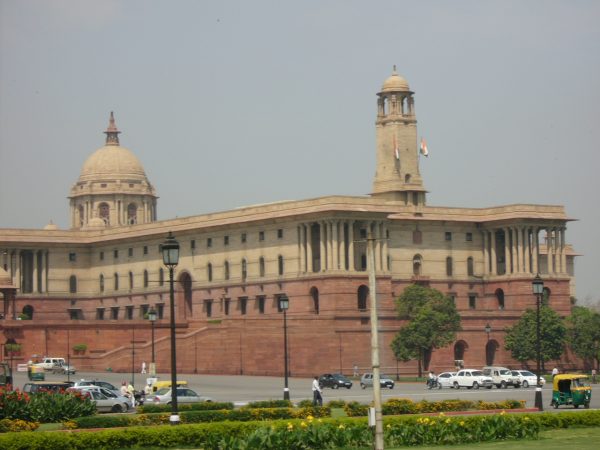Since the Congress is unlikely to significantly improve its tally and the opposition Bharatiya Janata Party is unlikely to obtain a simple majority on its own in the next general election, the next national government can only achieve a larger majority if it forges a larger coalition. But can a larger coalition push through contentious policies that may require constitutional amendments? In answering this question, an assessment of the ease of amending the Constitution of India is in order.
The procedure for constitutional amendment is laid down in Article 368 of the Constitution, and a number of other Articles limit the applicability of Article 368 in certain classes of amendments. The Supreme Court of India in Kesavananda Bharati v State of Kerala in 1973 imposed constraints on the parliament’s capacity to amend the basic structure of the Constitution. The Supreme Court subsequently reiterated its stance in Minerva Mills Ltd v Union of India in 1980.
As of 25 January 2013, the Constitution has been amended 98 times since its adoption on 26 November 1949. Excluding the first amendment, which addressed immediate operational difficulties, and the various amendments related to the State of Emergency (1975-1977) declared by the Indira Gandhi Government, the number of amendments drops to 93. The frequency and likelihood in which amendments have been passed varies throughout India’s independent history. While six amendments were adopted in 2003, there were no amendments in 18 out of 63 years since 1950, including between 1995 and 2000 when six different governments ruled the country.
The majority of amendments — 76 out of 93 — deal with issues like the creation of new states and the enactment of special provisions for certain regions within states, the conferral of constitutional recognition of certain languages, changes in the English spelling of recognised languages, the delimitation of electoral constituencies, extending the scope and lifespan of affirmative action policies, extension of President’s Rule in an insurgency-affected state, administrative and parliamentary procedures and oaths, and taxation and rent control. Adding 10 amendments that qualify property rights to this list, then it seems that more than 90 per cent of the amendments do not affect the basic structure of the Constitution. The remaining seven amendments include ones that limit fundamental rights but also those that enshrine India’s right to education, abolish the vestiges of princely states, and institutionalise the third tier of government.
While the sheer number of successful amendments does not necessarily suggest that the Constitution is by all means flexible, the barrier to progressive constitutional amendments is not a legal one — the real hurdle is political.
Two facts emerge from an analysis of both successful (1950-2013) and failed (1950-2004) constitutional amendments. First, while the rate of amendment has been higher in the post-Kesavananda period, amendment bills are less likely to receive the parliament’s approval. Second, compared to single-party governments, amendment bills introduced by coalition governments are more likely to fail — coalition governments are less likely to successfully amend the Constitution.
Part of the reason for this failure could be that coalition governments are relatively short-lived or, at least, suffer from greater uncertainty due to a weaker majority. Constitutional amendments, on the other hand, require governments to follow through in a lengthy process and be supported by a supermajority. Moreover, the majority that coalition governments enjoy often depends on post-election coalitions consisting of regional and caste-based parties, which are often in conflict with other coalition partners competing for the same vote base or with the leading party of the coalition itself. In other words, a larger post-election coalition cannot automatically cure the central government’s legislative weaknesses. This is particularly true of amendments that require ratification by states because a number of states are ruled by opposition parties.
In order to avoid policy paralysis arising from constitutional constraints, national parties will need to forge pre-election coalitions, which consist of regional partners with more or less exclusive support bases, and agree on a common manifesto ahead of the next general election. The leader of the next coalition government also needs a proactive strategy to engage with states ruled by the opposition, as well as states ruled by smaller coalition partners. This will lead to a more effective parliament and ensure the integrity of Indian federalism.
Vikas Kumar is Assistant Professor of Economics at Azim Premji University, Bangalore.

